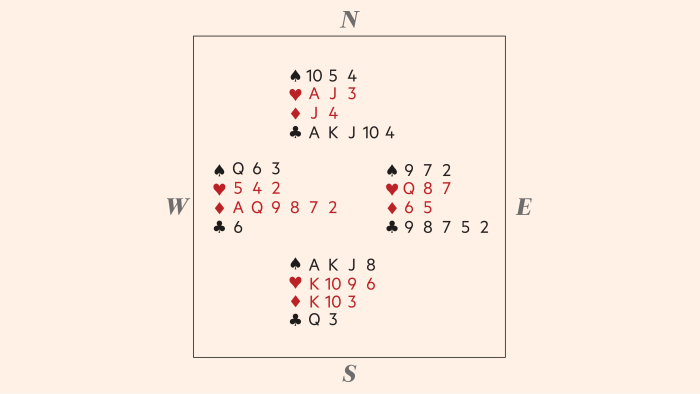Declarer: play off other cards before deciding on best play in key suit

Roula Khalaf, Editor of the FT, selects her favourite stories in this weekly newsletter.
Distribution, players’ actions and visualisation led to success for one declarer. What insight might this offer for future defenders?
Bidding
Dealer West
N/S Game
Most made 11 tricks, but a good player made 12. West’s 2D was weak; South’s 3D response to his partner’s double indicated both majors; 4C showed five or more clubs.
West led 5♥. With the heart suit sorted out, declarer must decide how to play the spade suit. West’s weak 2D showed 5-10pts with a six-card suit, so the point-count reveals little. Distributional information is required. Declarer played out four rounds of hearts, pitching 4♦ from dummy; West threw a diamond. When declarer ran five rounds of clubs — throwing all his diamonds — West showed out on round two and discarded four further diamonds, leaving himself with just A♦ and ♠Q63. Declarer played J♦ to West’s A♦, and warmly welcomed West’s enforced spade lead.
Because he clung to them, and both bidding and play had revealed West’s shape, South knew that he held Q♠. For a good player, it became an easy endplay. To counter this, West should foresee that he will be squeezed by dummy’s long suits, prepare earlier, and discard a low spade first. If West retains two diamond winners, declarer must now guess whether to finesse the spade or play for the drop. Many good players will misguess.
Read Paul’s previous Bridge columns at ft.com/bridge-card-game
Comments